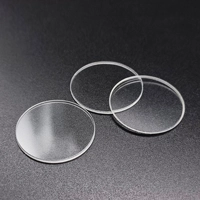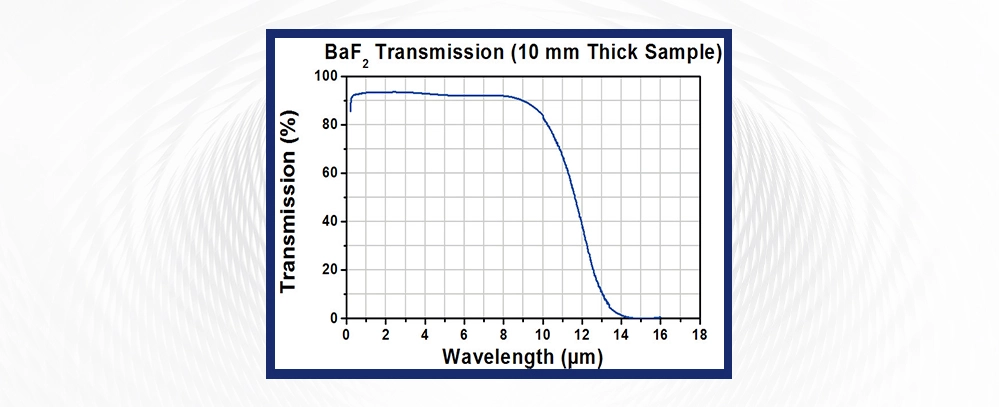Mar 31-2025
Barium fluoride (BaF2) has a near-90% transmittance in the wavelength range of 200–9500 nm. It boasts the widest broadband optical transmission, capable of transmitting from far ultraviolet to long-wave infrared, making it highly suitable for various applications, such as infrared spectroscopy. The low refractive index of barium fluoride, at 1.48, allows for high transmittance when combined with an anti-reflection film.
In a dry environment, calcium fluoride windows can endure up to 800 °C of ambient temperature, but prolonged exposure to water reduces their transmittance in the vacuum ultraviolet range. Compared to calcium fluoride windows, barium fluoride windows have lower moisture resistance but are more resistant to high-energy radiation, although they have lower UV transmission. The Knoop hardness of BaF2 is 82, and it is very sensitive to thermal shock. It is commonly used in cryogenic imaging systems, lenses in space optical systems, laser optical systems, beam splitters, filters, prisms, and windows. Due to its water solubility, BaF2 is best suited for dry environments. Its exceptional properties make it a valuable material in the field of infrared optics.

Spectroscopic optica system, Applicable to infrared imaging, monitoring, infrared inspection, telemetry and infrared

Applicable to optical systems such as infrared imaging, monitoring, infrared inspection, telemetry or infrared spectroscope and so on.

BaF2 Optics work by utilizing the unique optical properties of barium fluoride, a material that exhibits high transmission in the infrared range. As light passes through BaF2 Optics, it encounters a material with a low refractive index and minimal dispersion, resulting in minimal distortion and high clarity. This allows BaF2 Optics to accurately transmit infrared radiation, making them indispensable in applications requiring precise infrared imaging and detection.
1
Wide Transmission Range: BaF2 optics transmit from UV to mid-IR, suitable for applications like spectroscopy, UV lithography, and laser systems.
2
Low Absorption: BaF2 has low absorption in the UV and visible spectrum, ensuring high transmission and minimal energy loss.
3
Thermal Stability: BaF2 optics exhibit good thermal stability, maintaining performance in varying temperature environments.
4
Cost-Effective: BaF2 infrared optics are relatively affordable compared to other UV-transmitting materials, making them a cost-effective choice for certain applications.